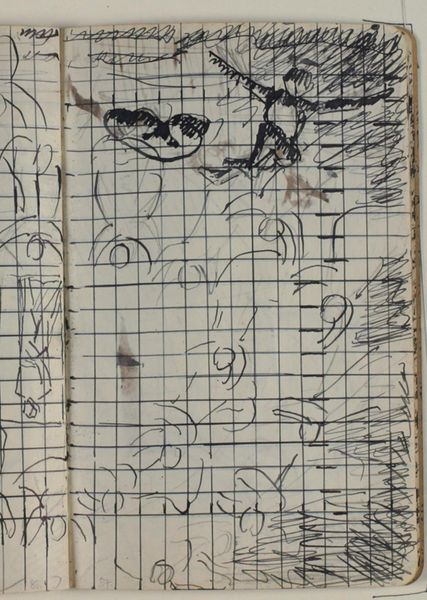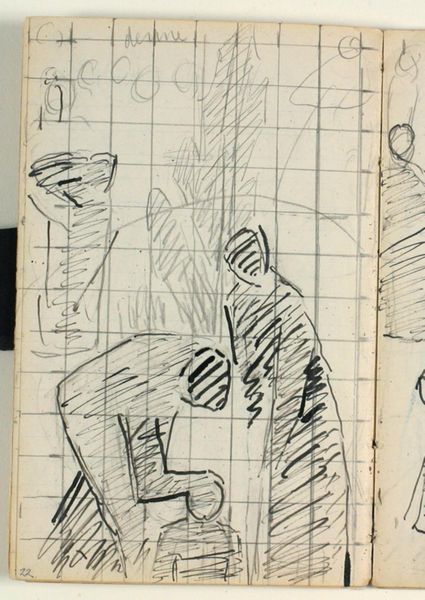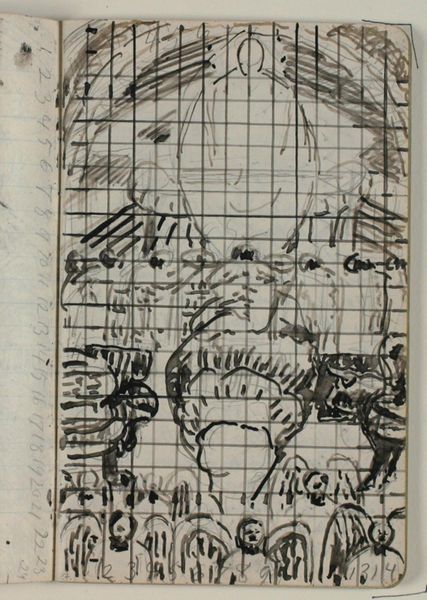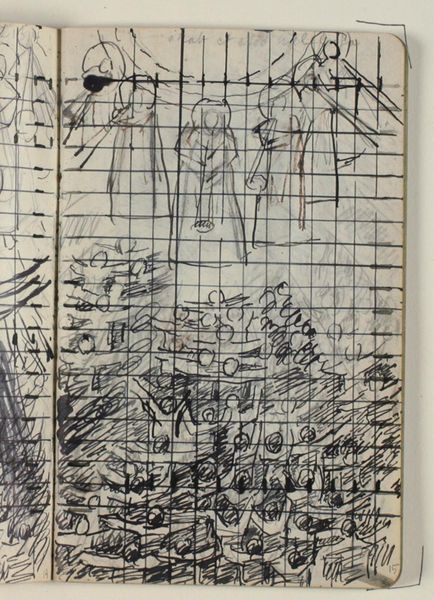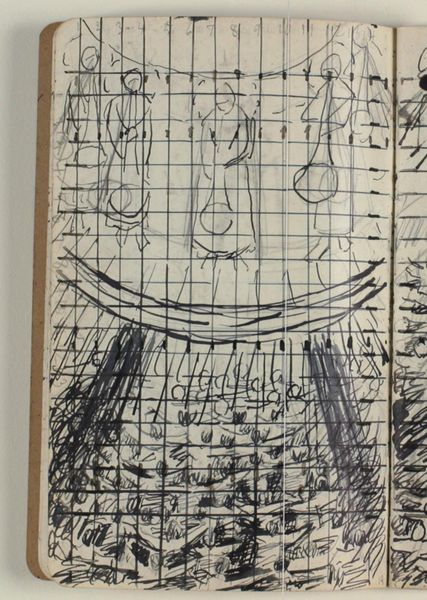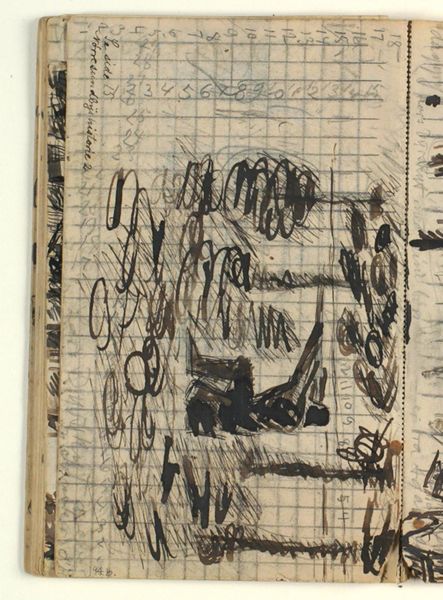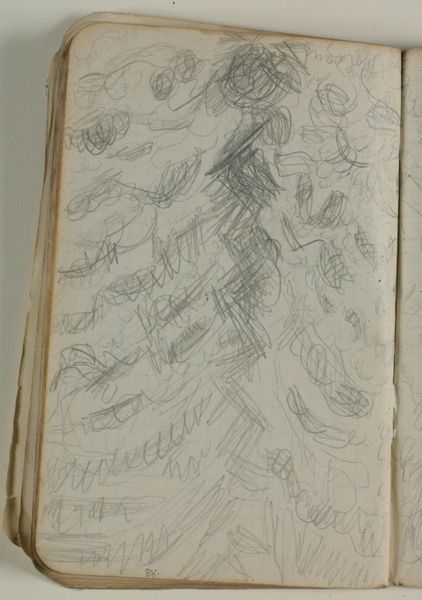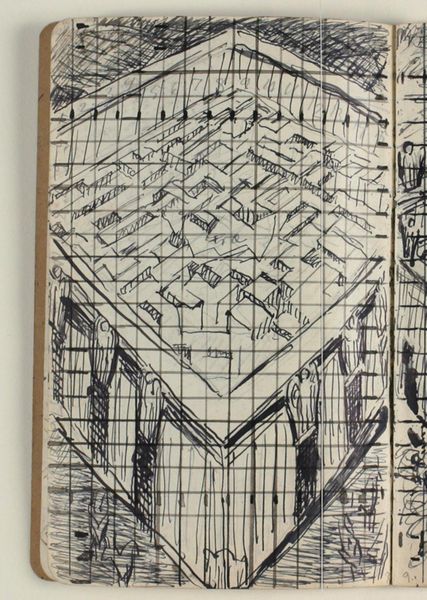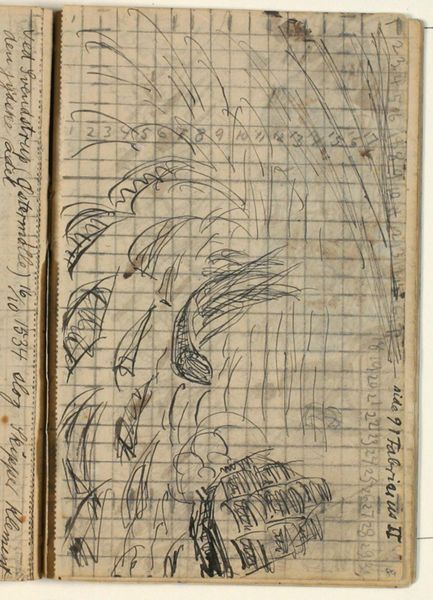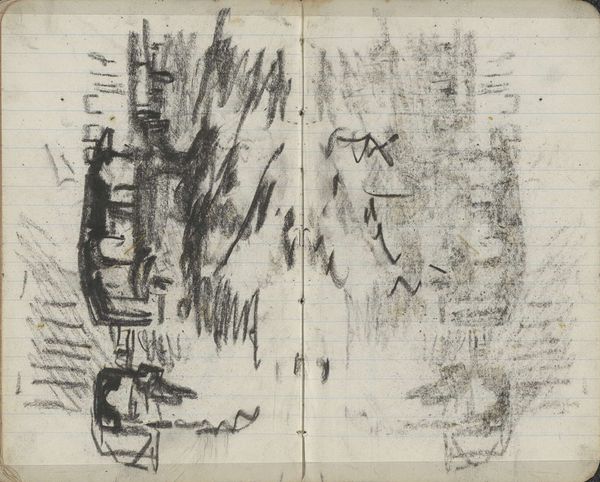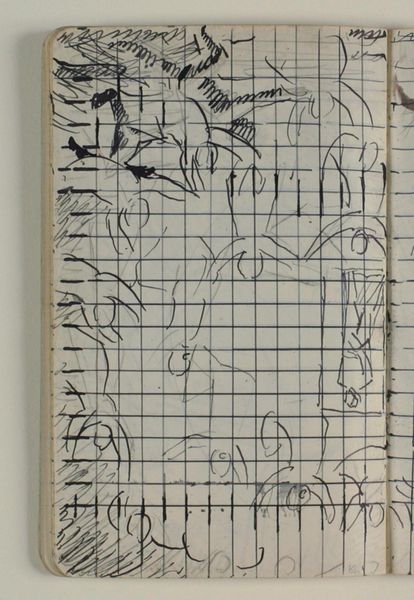
drawing, paper, ink, graphite
#
drawing
#
paper
#
abstract
#
ink
#
graphite
Dimensions: 175 mm (height) x 109 mm (width) (monteringsmaal), 175 mm (height) x 109 mm (width) (bladmaal)
Curator: I am immediately drawn to the frantic energy of this drawing. It feels raw and unrestrained, almost like an uncensored thought. Editor: This is Niels Larsen Stevns's work titled "Livets flod og livets træ" which translates to "The River of Life and the Tree of Life". It dates from 1933-34 and utilizes graphite and ink on paper. It resides here at the SMK, Statens Museum for Kunst. Curator: What I find especially interesting is the grid-like background. The use of lined paper almost transforms the drawing into a schematic or a plan, a blueprint for a concept rather than a finished artwork. Editor: Indeed, and this deliberate use of everyday materials points toward the democratizing impulse of art during that period. It collapses the boundaries between the formal, precious "art object" and the accessible, commonplace tools of labor and production. It also feels symbolic to me. Considering the turbulent period between the wars, what social functions do drawing and writing fulfill when there are too many issues to represent? Curator: I agree that the tension here is potent. The abstract figures intermingling with more discernible elements such as birds and vegetal motifs, creating a world of interwoven symbols that might not easily resolve. Editor: For sure. One could read it through the lens of trauma studies – looking at how lived experience is refracted through layers of abstraction. Do these symbolic depictions provide a veil and insight at once? Curator: Precisely. And while the techniques themselves seem simple—basic graphite and ink—their application creates a deeply complex and multi-layered image. It’s almost as if the medium underscores the tentative process of making meaning during this era. Editor: It's almost like a palimpsest, then, where multiple layers of experience and perception are written and rewritten, forming new contours of feeling. It certainly asks viewers to pause and consider these fraught socio-historical contexts. Curator: Seeing how raw and spontaneous this feels makes me reconsider the boundaries of a sketch and an artwork. Is this something to behold in and of itself, as an object, or does the intention lie in production and the process, making it more about its concept and being? Editor: I think that’s the fascinating thing about approaching a work like this from the margins; that it compels one to ask broader, more fundamental questions about identity, politics, art, and history—while opening up space for dialogue. Curator: Right, these thoughts certainly give pause in a new way to our concept of artistic creation.
Comments
No comments
Be the first to comment and join the conversation on the ultimate creative platform.
